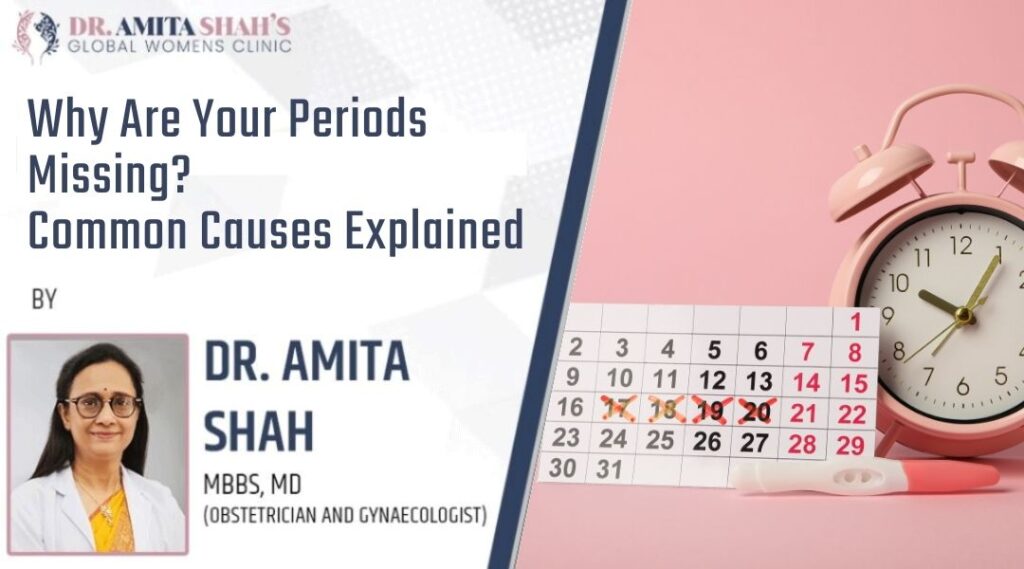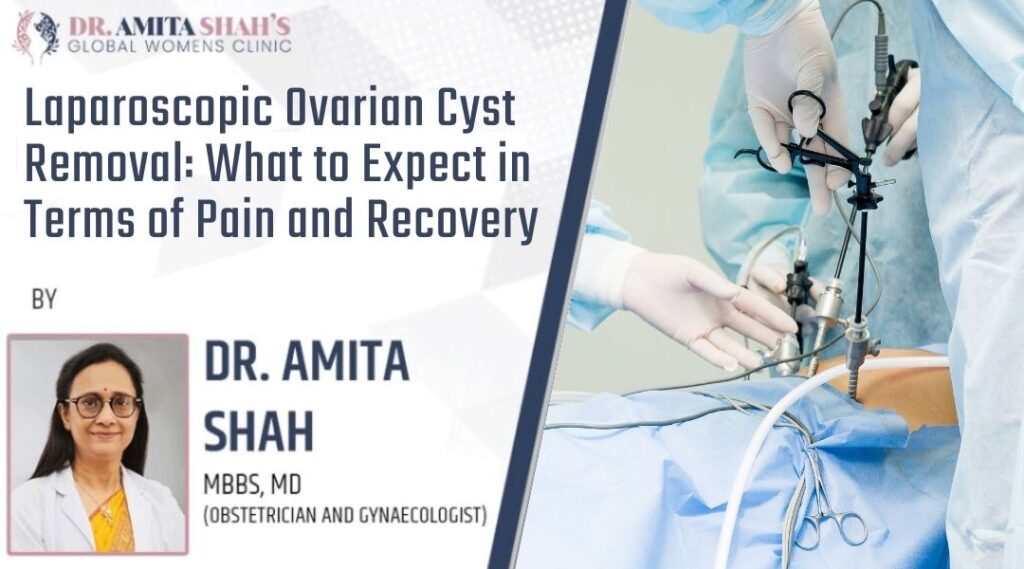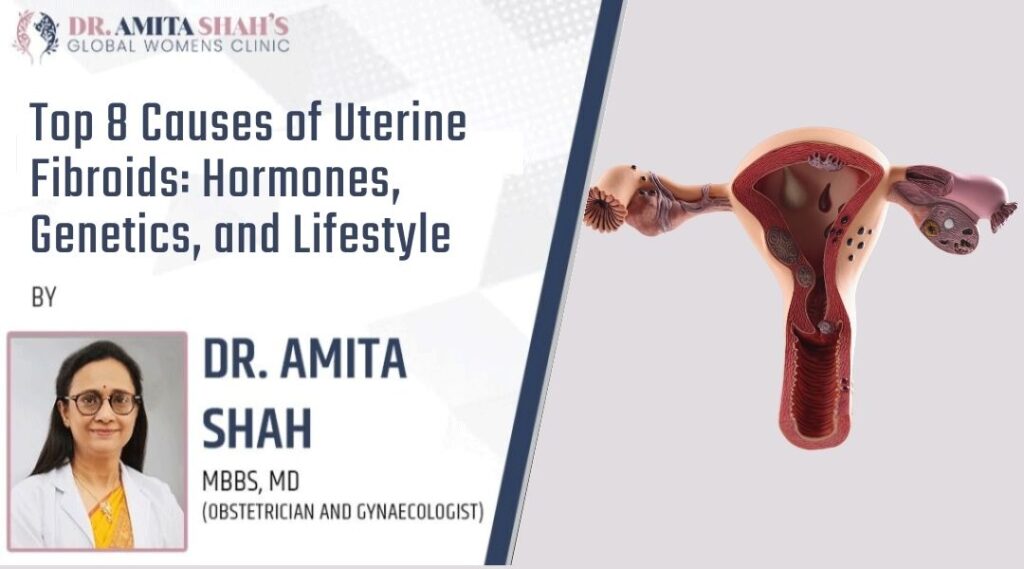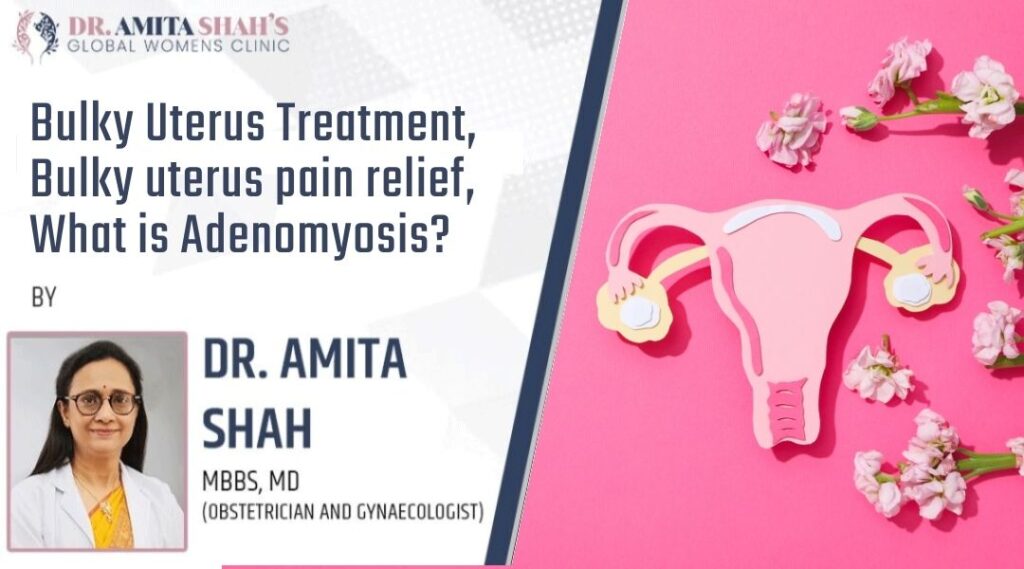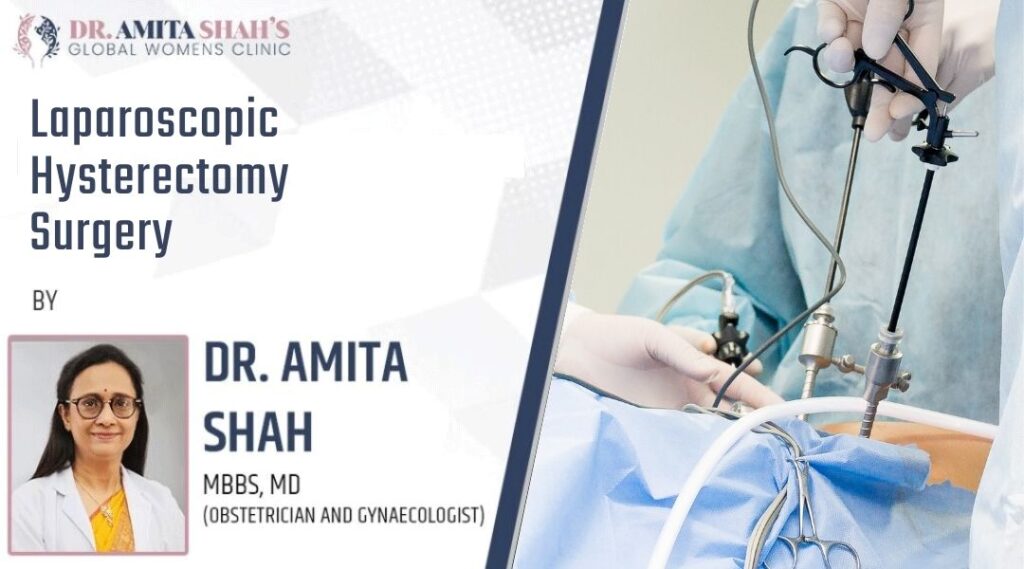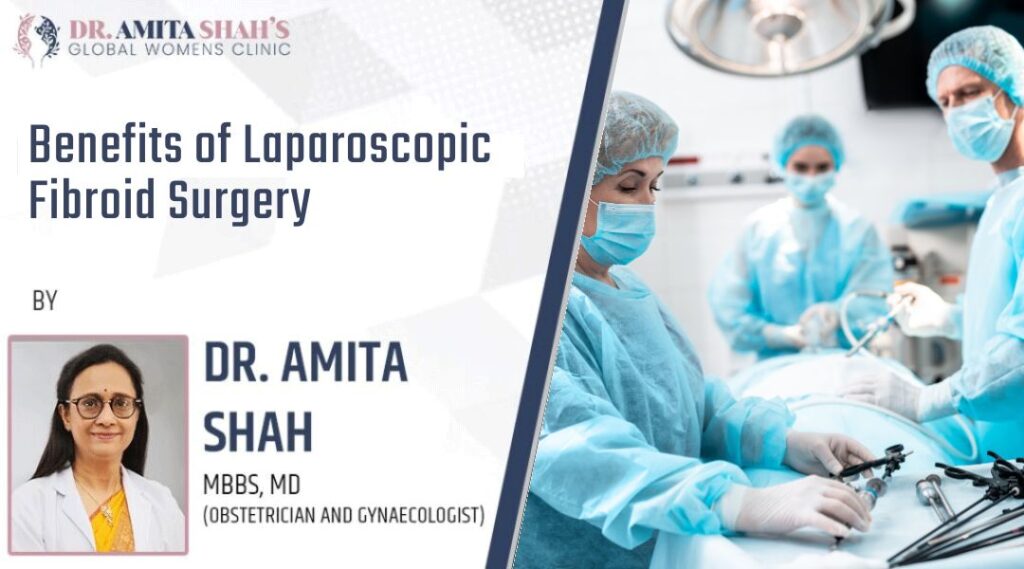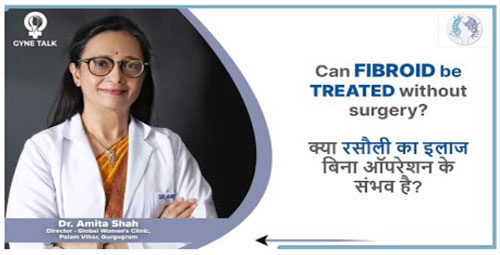The endometrium is the tissue that lines the interior of the uterus (uterus). Endometriosis is a condition in which endometrial tissue is found outside of the uterus. It becomes ‘trapped’ in the pelvic area, lower tummy (abdomen), and, in rare cases, other areas of the body. For the Best gynae-obs in Gurugram contact Dr Amita Shah at Global Women’s Clinic
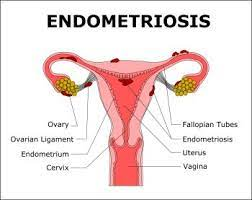
It is currently unknown what causes endometriosis. Numerous factors could be to blame, including genetic, immunological, and hormonal reasons.
Symptoms
Endometriosis patches can range in size from a pinhead to large clumps. Endometriosis affects many women who have no symptoms. If symptoms appear, they can range from mild to severe and may include those listed below.
In general, the larger the endometriosis patches, the worse the symptoms. This, however, is not always the case. Some women have large patches of endometriosis but no symptoms. Some women have only a few endometriosis spots but suffer from severe symptoms. There are numerous possible symptoms. Among the more common symptoms are:
Painful periods. The pain usually starts a few days before the period and lasts the entire period. It is not the same as regular period pain, which is usually not as severe and does not last as long.
Pain during sex. The pain is usually felt deep within and can last for several hours after sex.
Pain in the lower abdomen (abdomen) and pelvic region. The pain can be constant at times, but it is usually worse in the days leading up to and during a period.
Other menstrual symptoms, such as bleeding between periods, may occur.
Difficulties conceiving (reduced fertility). This could be due to endometriosis clumps obstructing the passage of the egg from the ovary to the Fallopian tube. Sometimes the cause of decreased fertility is unclear.
Other symptoms include fatigue, pain when passing faeces, pain in the lower abdomen when passing urine, low back pain, and, in rare cases, blood in the urine or faeces.
Patches of endometriosis can appear in other parts of the body very rarely. This can result in unusual pains in parts of the body that occur concurrently with period pains.
Causes
Several theories have been proposed over the years. The endometrium is the lining of the womb (uterus). According to one theory, some endometrial cells migrate outside the uterus and into the pelvic area. When you have a period, they spill backwards along the Fallopian tubes.
Endometriosis patches are sticky and can connect organs. Adhesions is the medical term for this. The bladder or bowel, for example, may stick to the uterus. Large patches of endometriosis can develop into cysts that bleed every month when you have your period. The cysts, known as ‘chocolate cysts,’ can fill with dark blood.
How is an endometriosis diagnosis confirmed?
Endometriosis symptoms can be caused by other conditions. As a result, if any of the above symptoms become persistent, tests to determine the cause of the symptoms are usually recommended. A laparoscopy is usually used to confirm endometriosis. This is a minor procedure that entails making a small anaesthetic-assisted cut in the tummy (abdominal) wall below the tummy button (umbilicus). To look inside, a thin telescope-like instrument (a laparoscope) is pushed through the skin and the doctor can see endometriosis patches.
How does endometriosis develop?
The progression of endometriosis is highly variable. Endometriosis may improve if left untreated, but it may also worsen or remain the same. Endometriosis is not a cancerous disorder.
Complications can occur in women suffering from severe untreated endometriosis. Large patches of endometriosis, for example, can occasionally cause a blockage (obstruction) of the bowel or the tube (the ureter) that connects the kidney to the bladder.
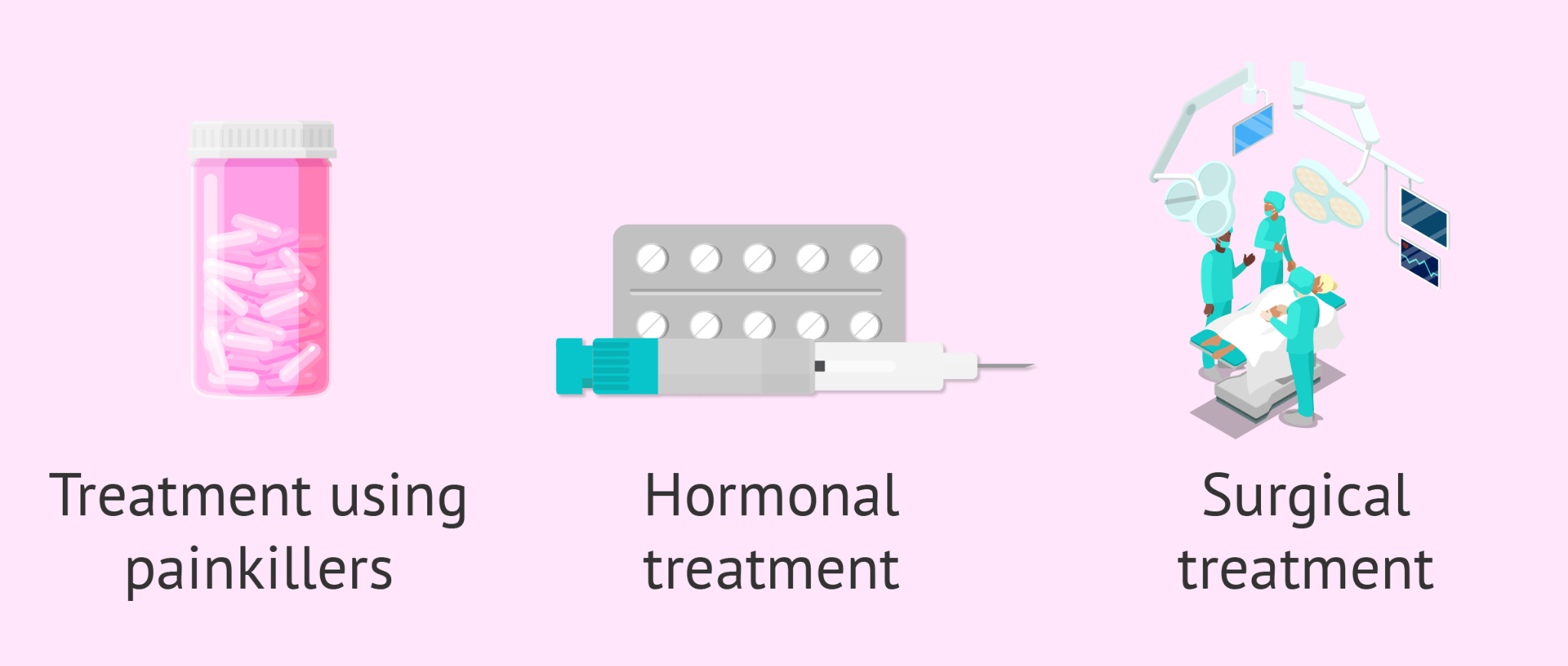
What are the treatment’s goals?
The main goals of treatment are to alleviate symptoms such as pain and heavy periods, as well as to improve fertility if it is compromised. There are several treatment options, which are discussed further below.
Treatment
If your symptoms are minor and fertility is not an issue for you, you may choose to forego treatment. Endometriosis clears and symptoms disappear in approximately three out of every ten cases without treatment. You can always change your mind and seek treatment if your symptoms persist or worsen.
Endometriosis pain relievers
To relieve period pain, it is best to take pain relievers regularly rather than ‘now and then.’
Endometriosis hormone treatments
There are several alternatives. They have the potential to be effective, particularly in the reduction of pain. They do not increase fertility, but they do not reduce fertility permanently.
(i). the combined oral contraceptive pill.
(ii). Analogues of gonadotropin-releasing hormone (GnRH). GnRH analogue preparations include buserelin, goserelin, nafarelin, leuprorelin, and triptorelin.
(iii). progestogen hormones tablets
Surgery
An operation may be recommended to remove some of the larger patches of endometriosis. If infertility is a problem, an operation may alleviate symptoms and increase the chances of pregnancy.
Numerous techniques can be employed. A thin telescope-like instrument (a laparoscope) is most commonly inserted through a small cut in the tummy (abdomen). The laparoscope is then used by the surgeon to look inside the abdomen and remove any cysts or endometriosis tissue (keyhole surgery).
Direct heat or a laser can be used to destroy suspected endometriosis tissue as an alternative to excision (removal of endometriosis areas) (this is called ablation). Ablation is now preferred over excision.
However, for endometriosis that does not involve the bowel, bladder, or the tube carrying urine from the kidney to the bladder, either excision or ablation with the removal of areas of scar tissue (adhesions) can be used (ureter). This increases the likelihood of pregnancy.
A more traditional operation with a larger cut to the abdomen is performed occasionally, but less frequently, to remove larger patches or cysts.
Other treatments haven’t worked, removing the womb (uterus) – known as a hysterectomy – may be an option. The ovaries may be removed as well. Endometriosis is more likely to reoccur if your ovaries are not removed. If your ovaries are removed during your hysterectomy, you may require hormone replacement therapy (HRT).




